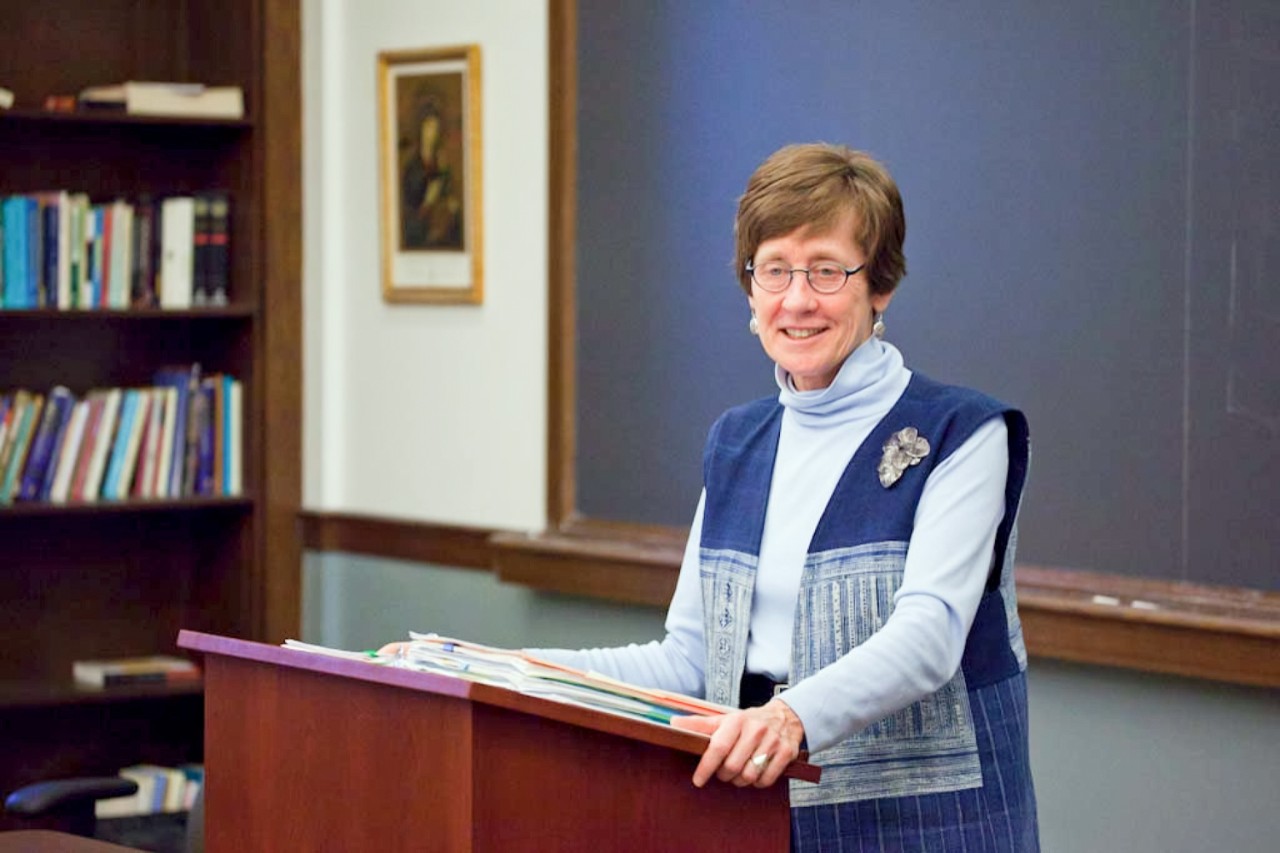The story of Clare of Assisi (1193-1253), the first woman to formally associate with Francis of Assisi, is explored in a new book, Clare of Assisi and the Thirteenth-Century Church: Religious Women, Rules, and Resistance by School of Theology and Ministry Associate Professor Catherine M. Mooney, who also counters some of the traditionally held beliefs about Clare.

Catherine Mooney (Caitlin Cunningham)
A 13th-century Italian woman born into a wealthy family, Clare was “steely and determined,” according to Mooney, a medieval historian who specializes in the lives of saints. Clare was among Francis’ first followers and committed to living a radically poor material life. She left her family, joined the Franciscan movement, and led an independent house of religious women, called the Community of San Damiano.
To learn more about Clare’s life, Mooney conducted research in archives in Italy and studied documentation from the 13th century to the 20th century—including papal letters, the few existing letters written by Clare, as well as canonization testimony. She expressed gratitude to Interlibrary Loan Manager Anne Kenny of O’Neill Library for her assistance in her research.
Clare’s commitment to live radically poor put her at odds with papal authority, according to Mooney. Mooney found evidence that sisters allied with Clare gave away possessions that had been given to them by the pope, in direct defiance of papal instructions. Clare and her sisters were “strategic and as complex and political as people are today. Careful not to rebel openly against papal directives, they astutely led their life according to their own vision.”
Mooney’s research findings upend some of the long-held beliefs about Clare.
A popular narrative credits Clare with the founding the Order of San Damiano, which after her death became known as the Order of Saint Clare or the Poor Clares. Mooney shows that Clare did not found the order and that the origins of the religious order were more complicated.
Clare’s independent house of women, the Community of San Damiano, was cajoled, perhaps even coerced, into joining a religious order founded and directed by the papacy. In a move that would enhance the order’s cachet, Pope Gregory IX renamed it the Order of San Damiano, increasing its association with Clare and Francis. Clare was then portrayed as the spiritual mother of the entire order.
“So Clare did not found the order, rather, it was an order that found Clare,” said Mooney.
Clare also is known as the first woman to write a religious rule for women. The rule, approved by the papacy on the cusp of Clare’s death, emphasized the importance of the order’s commitment to material poverty and explicitly stated the sisters were as much a part of the Franciscan family as the friars. According to Mooney, Clare is not the sole author of this rule. Mooney studied documents spanning 750 years to show that this erroneous characterization of Clare took off only in the 20th century. The more likely scenario is that the religious rule was written collaboratively by Clare, her sisters, and a few male allies.
Mooney debunks myths about Clare, but also demonstrates Clare’s key role within an innovative religious movement.
“I hope this work puts a proper spotlight on Clare,” said Mooney. “Clare was not merely a sidekick of Francis; she was not a two-dimensional submissive figure. She was a complex leader, committed to service and poverty, who engaged in subtle diplomacy to defend her sisters’ position in the Franciscan movement.”
--Kathleen Sullivan | Office of University Communications



